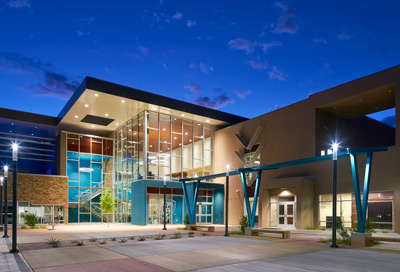FGIA Releases 2019/2020 Market Studies, Offers Forecast of Fenestration Industry Trends

The Fenestration and Glazing Industry Alliance released the “FGIA 2019/2020 Study of the U.S. Market for Windows, Doors and Skylights.” This bi-annual report delivers timely information about residential and nonresidential market trends and product relationships for residential and nonresidential fenestration products. Forecasts are based on projections of construction activity as of May 2020.
Nonresidential
Contract awards reflect activity related to new construction and major additions to existing structures. Actual fenestration demand (shipments) for nonresidential building activity typically lags contract awards by up to one year or more. This cycle can shorten or lengthen depending on the complexity or size of a building and when the specific building product is installed during the construction cycle.
The 2019 contract award total was flat from 2018. The manufacturing/warehouse category decreased by 1 percent in 2019, while contract awards in office/hotel/institutional increased by 1 percent and decreased in store/mercantile by 1 percent. Contract awards are expected to decline by about 4 percent in 2020, before recovering in 2021.
Storefront windows represent the largest market segment by vision area with 27.3 percent of the overall nonresidential glazing in 2019, followed closely by site-fabricated windows representing 26.3 percent. Site-fabricated are most frequently utilized in new construction and major additions whereas shop-fabricated windows are more common in replacement applications.
The 2019 market for nonresidential entry doors in the U.S. has continued to experience growth, with 2019 volume up 1 percent over 2018 and up 2 percent since 2017.
The study estimates that the total U.S. market for commercial unit skylights in 2019 saw a 14 percent increase from 2017. Unit sizes commonly average in the range of 22 to 25 square feet but can vary dramatically. Nearly all commercial unit skylights are aluminum framed, and most use some form of plastic glazing―acrylic is most common. In 2019, new construction applications represented approximately 35 percent of the total, up from 31 percent in 2017, reflecting increasing adoption of unitized skylights in commercial buildings.
A session explaining the methodology and forecasting of the study will take place during the FGIA 2020 Virtual Summer Conference to be held June 23-25. Additional and more detailed information on the residential and commercial fenestration markets is contained in the “FGIA 2019/2020 Study of the U.S. Market for Windows, Doors and Skylights,” published in May 2020, which includes the items listed below.
- "FGIA U.S. Industry Channel Distribution Report" profiles the residential and nonresidential market for windows and doors as it flows through the identified distribution channels.
- "FGIA U.S. Industry Market Size Report" quantifies residential and nonresidential market volumes, both historic and projected.
- "FGIA U.S. Industry Regional Statistical Review and Forecasts" details information on trends and product relationships.

